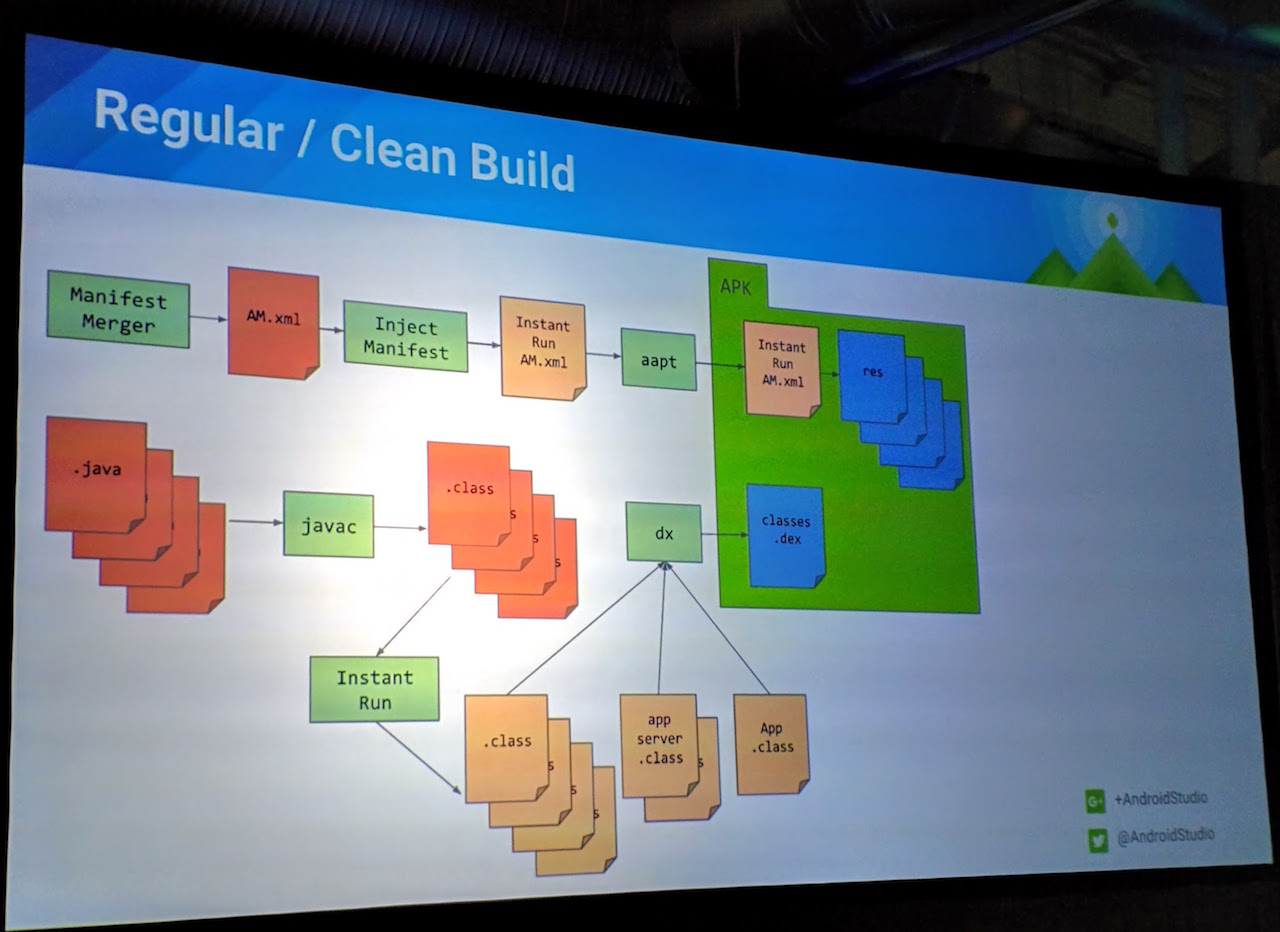Android Studio 2.0 & Android Emulator 2
On November 23 & 24, I attended the first ever Android Dev Summit. The following are notes that I took during talks. I have included the video of the talk as well. Again, these are my notes from the talk, not my original content.
Chiu-Ki Chan (Android GDE) took really great notes during the session as well, here’s what she had:
What's in New Android Studio by Jamal Eason & @droidxav & @tornorbye #AndroidDevSummit #Sketchnotes pic.twitter.com/4Bo1Ma9XpB
— Chiu-Ki Chan (@chiuki) November 24, 2015Recap
Launched at I/O 2015:
- GPU Monitor
- Network Monitor
- App Templates
- Theme Editor
- Vector Asset Studio
- Lots of other stuff.
Bottlenecks
- dx
- proguard
- aapt
- Legacy multi-dex
- Upload to device
- Installation
Improvements
dx
- Improved dx merger
- Build Tools 23.0.2+.
- Run dx in process
- Gradle 2.4+
- Plugin 2.0.0+
- Build Tools 23.0.2+
- New option to configure memory allocated to gradle
org.gradle.jvmargs=-Xmx4096mto change allocated memory for gradle.- long-lasting daemon, instead of short-lived instance
- Run up to 4 dx tasks in parallel
- Use environment variable android.dexerPoolSize to change
Here’s how to enable dex in process:
android {
dexOptions {
dexInProcess = true
}
}
ProGuard
Issues
- not incremental
- disables pre-dexing
- single jar output
- full re-dexing every time
Improvements:
- Some incremental support
- does not disable pre-dexing
Implementation:
android {
buildTypes {
debug {
minifyEnabled true
useProguard false
}
release {
minifyEnabled true
useProguard true
}
}
}
Caveats:
- Currently supports shrinking only
- Configured per-variant: Use ProGuard for release (obfuscation, optimizations)
- Will allow single pass legacy multi-dex
- Coming in preview 2 (hopefully).
App Deployment
Improved deployment speed
Built specifically for the connected device during debug builds. (Android Studio only!)
Only package one set of assets (e.g. mdpi only)
Currently, only density is supported. Only package one set of assets (e.g. mdpi only).
Later:
- ABIs
- Multi-Dex
Install time for IO Schedule (5MB) on N6 was 12 seconds.
Instant Run
- Deploy deltas only
- avoid installation
- no app killing
Scenarios:
- Hot swap
- Warm swap
- Cold swap
- Rebuild & Reinstall
Notes:
- Gradle behaves differently when run from Studio
-Pandroid.optional.compilation=INSTANT_DEV
- Create Instant Run specific tasks.
- Prepare APK for Instant Run
- Bytecode instrumentation
- Server inside app for IDE to talk to
Here’s a quick overview of what a build looks like with Instant Run turned on:

App Running with Server
- IDE Checks
- Is Gradle 2.0?
- Do build IDs match?
- Studio -> App connection
- Is app running?
- Is activity in foreground?
- Custom Gradle run
- Build deltas through a custom task
- Runs a verifier to ensure that we can do HotSwap
- Tells Studio
- Optimization: Studio monitors file changes
- Tells gradle to avoid no-op module builds
-Pandroid.optional.compilation=INSTANT_DEV,LOCAL_JAVA_ONLY
Hot swap: Resources
- Send full resources (for now)
- reflection hacks to make it work on the fly
- incremental aapt on the way
Limitations
- manifest changes detected by Studio, triggers full build
- any ID changes, including values trigger a full/new build
Cold Swap
- incompatible changes
- require restarting the app, and full build/install
- but should still trigger the delta update
- working on it, demo soon
Instant Run and Build
Simple UI
- Run
- Instant Run
- Debug
- Instant Debug
Very easy:
- Just press run
- also have a stop button
- optionally restart activity
Need to turn things on in the Instant Run prefs.
Data binding is broken in the preview build, working in nightlies.
Emulator
Performance - Faster deployment of apks
Features
New UI for lots of tools
- Mock GPS locations
- Mock different cellular network types
- Fingerprint
- Rotate
- Resize